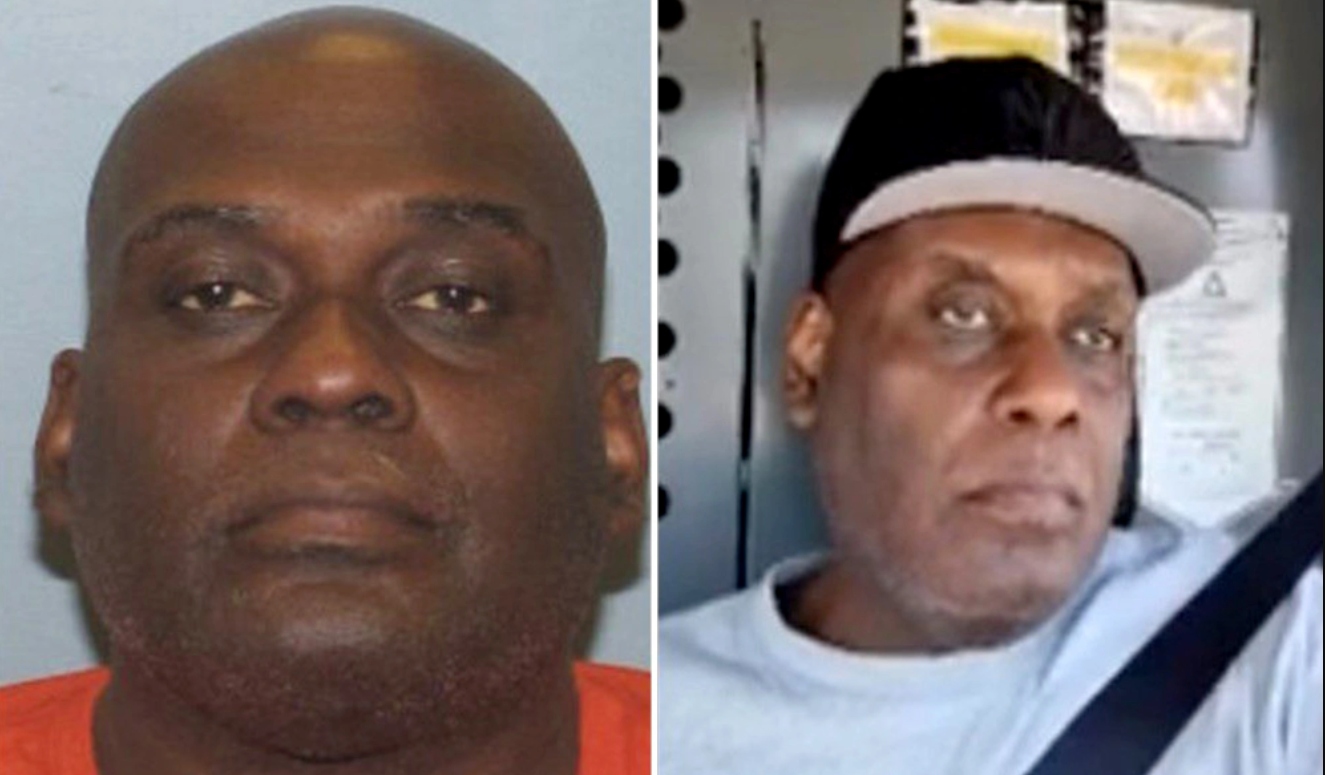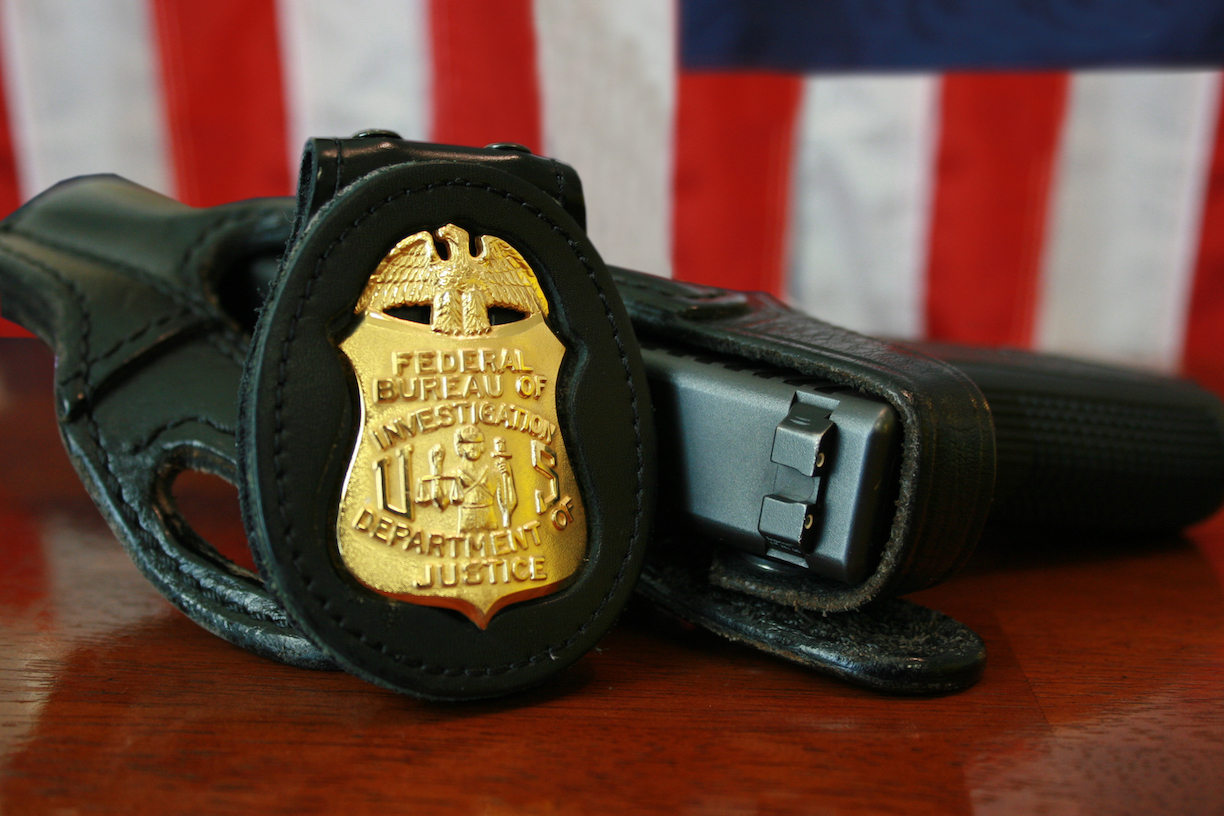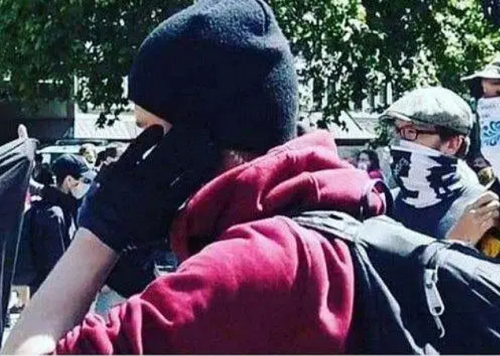EXCLUSIVE: New Jan. 6 bodycam videos show DC police officer assaulting unconscious protester
05/02/2022 / By News Editors

A District of Columbia police officer used a large wooden stick to strike the body and head of protester Rosanne Boyland three times as she lay motionless on the ground on Jan. 6, 2021, according to bodycam footage from several officers obtained by The Epoch Times.
(Article by Joseph M. Hanneman republished from TheEpochTimes.com)
Use-of-force expert Stanley Kephart, upon reviewing the previously unreleased footage, concluded that the three full-force blows by D.C. police officer Lila Morris constituted a felony assault with intent to cause great bodily harm.
Kephart called Morris’s use of force “indefensible” and the internal-affairs investigation of Boyland’s death a “clear and convincing coverup.”
“I think that the first thing that occurred is an assault under the color of authority by Morris,” Kephart told The Epoch Times. “That is a crime, an arrestable offense.”
Police at the mouth of the Lower West Terrace tunnel at the U.S. Capitol ignored dozens of pleas to help Boyland after she collapsed, the videos show.
When a lifeless Boyland was pulled inside the building more than 10 minutes later, other police and EMS personnel began 50 minutes of life-saving efforts that ultimately failed.
An independent forensic pathologist hired by the Boyland family contends that her cause of death wasn’t an overdose of the prescription drug Adderall—as reported by the D.C. medical examiner—but manual asphyxia. Boyland was crushed under a pile of people when police gassed protesters and pushed them out of the tunnel at about 4:20 p.m. on Jan. 6.
‘Under the Color of Authority’
Kephart, a 42-year law enforcement veteran and former director of security for the 1984 Los Angeles Summer Olympics, reviewed Boyland’s case at the request of The Epoch Times. He has testified as a witness more than 350 times on topics including excessive force, police discipline, officer safety, and crowd control.
Kephart concluded that Morris’s use of force was a felonious “assault under the color of authority,” with intent to cause great bodily harm. He said that Morris should be prosecuted in criminal court and fired from the D.C. Metro police force.
“I believe two things were in operation here. One was anger at this person,” Kephart said, referring to Boyland. “That was overridden by fear. And those two elements were the causal connection between what was done to the person by the officer and the result.”
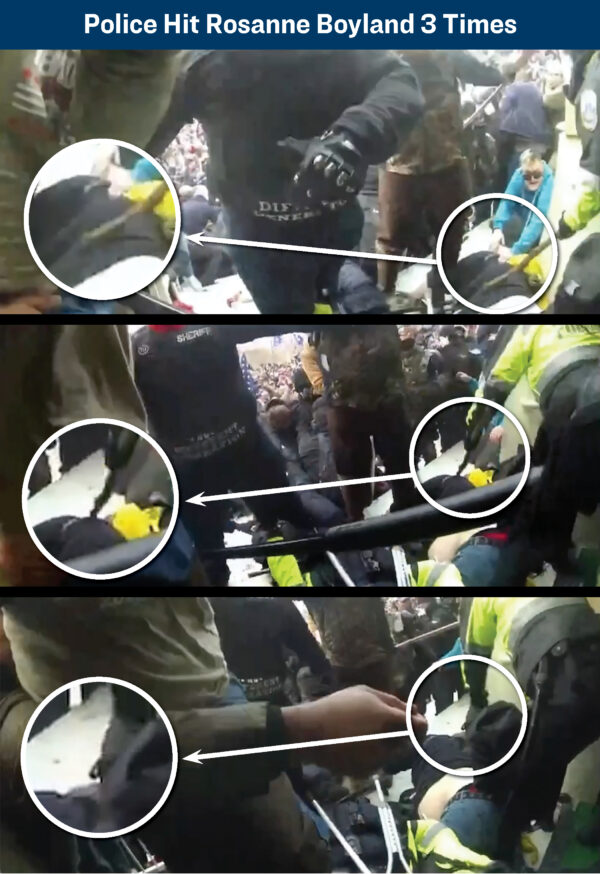
Rosanne Boyland was struck with a wooden stick on Jan. 6, 2021: once in the ribs and twice in the head, video evidence shows. (Metropolitan Police Department Bodycams/Graphic by The Epoch Times)
The force used against Boyland fails a four-part standard set in the 1989 U.S. Supreme Court case Graham v. Connor, Kephart said: whether force was ever needed and appropriate in the situation, the extent of the injury, and “whether the force was applied in a good-faith manner to maintain and restore discipline, or maliciously and sadistically.”
Police are trained not to strike people in the head with a blunt object. In the West Terrace tunnel, something overcame that training, Kephart said.
“If you have a trained officer who is angry at what the crowd is doing and the crowd rises up and puts him in a position where he feels his personal safety is compromised, fear begins to take over the anger, and the reflexive response throws the training right out the window,” Kephart said.
Chief Robert Contee of the Metropolitan Police Department didn’t respond to a request for comment. A message left with the department’s public information office wasn’t returned.
After publication of the article, department spokesperson Alaina Gertz told The Epoch Times in an emailed statement: “The matter involving Officer Morris was previously brought to our attention and reviewed thoroughly. This review included her body-worn camera footage, and did not substantiate the allegations you have outlined.”
Morris’ own bodycam shows her swinging the stick but does not show where the hits land. Body camera footage from nearby officers, however, shows where the blows land on Boyland’s body.
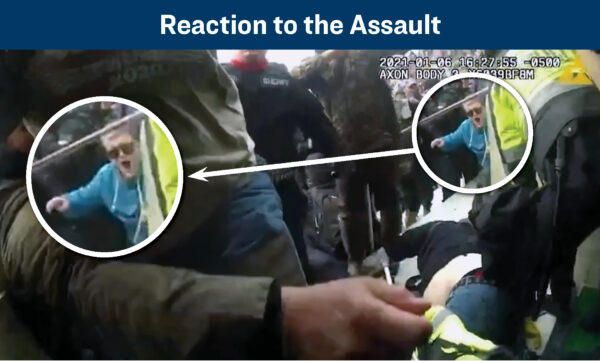
Justin Winchell reacts in horror when his friend Rosanne Boyland is struck in the head with a wooden stick. Boyland was struck three times. Officer Lila Morris tried striking a fourth time, but the stick flew from her hand. (Metropolitan Police Department Bodycam/Screenshot via The Epoch Times)
One protester who allegedly used the same wooden stick to strike and jab at police in the terrace tunnel was charged with assaulting, resisting, or impeding certain officers using a dangerous weapon. Jonathan Mellis was charged in a 10-count indictment on March 10, 2021. He pleaded not guilty. Mellis is being held in jail pending trial.
Police Ignored Pleas for Help
Police bodycam video shows protesters begging officers to render life-saving aid to Boyland from the moment she collapsed at the mouth of the tunnel. The pleas grew more desperate as it became apparent Boyland was dying. That sparked a violent backlash from rioters, who attacked the police line with fists, flag poles, sticks, and a whisk broom.
“There’s people under here!” shouted Justin Winchell, Boyland’s friend who accompanied her to Washington that day. “There’s people trapped under here!”
A protester right at the police line who was bleeding from a baton strike to the head pointed to Boyland and pleaded for help. “Get her up. Get her up! Get her up, please,” the man urged. “Save her life! Save her life, please!”
One officer used his baton and boots to push five protesters on top of Boyland, bodycam video shows. “Please get her up! She’s gonna die!” Winchell shouted.
There was the sound of a female coughing as a battle raged above and around Boyland. The coughing stopped at 4:26:04 p.m., according to a timeline developed by The Epoch Times from police bodycam footage. A few seconds later, the large crowd on the terrace began chanting, “I can’t breathe! I can’t breathe!”
“My God! She’s dead! She’s dead! Rose!” Winchell cried at 4:26:52 p.m. “Rosanne! I need somebody! She’s dead! … I need somebody! I need medics!”
Just shy of 4:28 p.m., protester Luke Coffee of Dallas stepped to the front of the police line, held up his hand, and shouted, “Stop!” He was squirted in the face with pepper spray but maintained his position.
A rioter threw a large wooden stick at Morris from out in the crowd. At the time, Morris was in the tunnel, crouching behind a protester who had his arms covering his head.
3 Strikes
Morris picked up the wooden stick, raised it over her head, and struck Coffee on the right elbow, bodycam video shows. She aimed a second strike at Coffee but missed.
The video then shows that Morris raised the stick over her head with both hands and unleashed three quick hits to Boyland’s body: one to the ribs and two to the head. The second blow to the head drew a horrified reaction from Winchell.
The wooden stick flew from Morris’s left hand as she wound up for another strike on Boyland, the videos show. Morris whiffed in her final attempted hit. The stick ricocheted off the tunnel arch and flew over Morris’s head.
Coffee reached down and picked up an aluminum crutch that had been thrown at police several times during the afternoon. He held the crutch over his head for several seconds, then used it like a plow to push the police line back into the tunnel several feet.
As Coffee pushed the police line back, bystanders dragged Boyland down several steps and began CPR. Nearly three minutes later, they carried her directly in front of the police line and continued doing CPR. No officers moved to lend assistance.
At 4:31 p.m., Boyland was dragged by officers to the back of the tunnel and inside the Capitol. In the process, she lost her jeans, backpack, and top, leaving her clothed only in leggings, according to bodycam video.
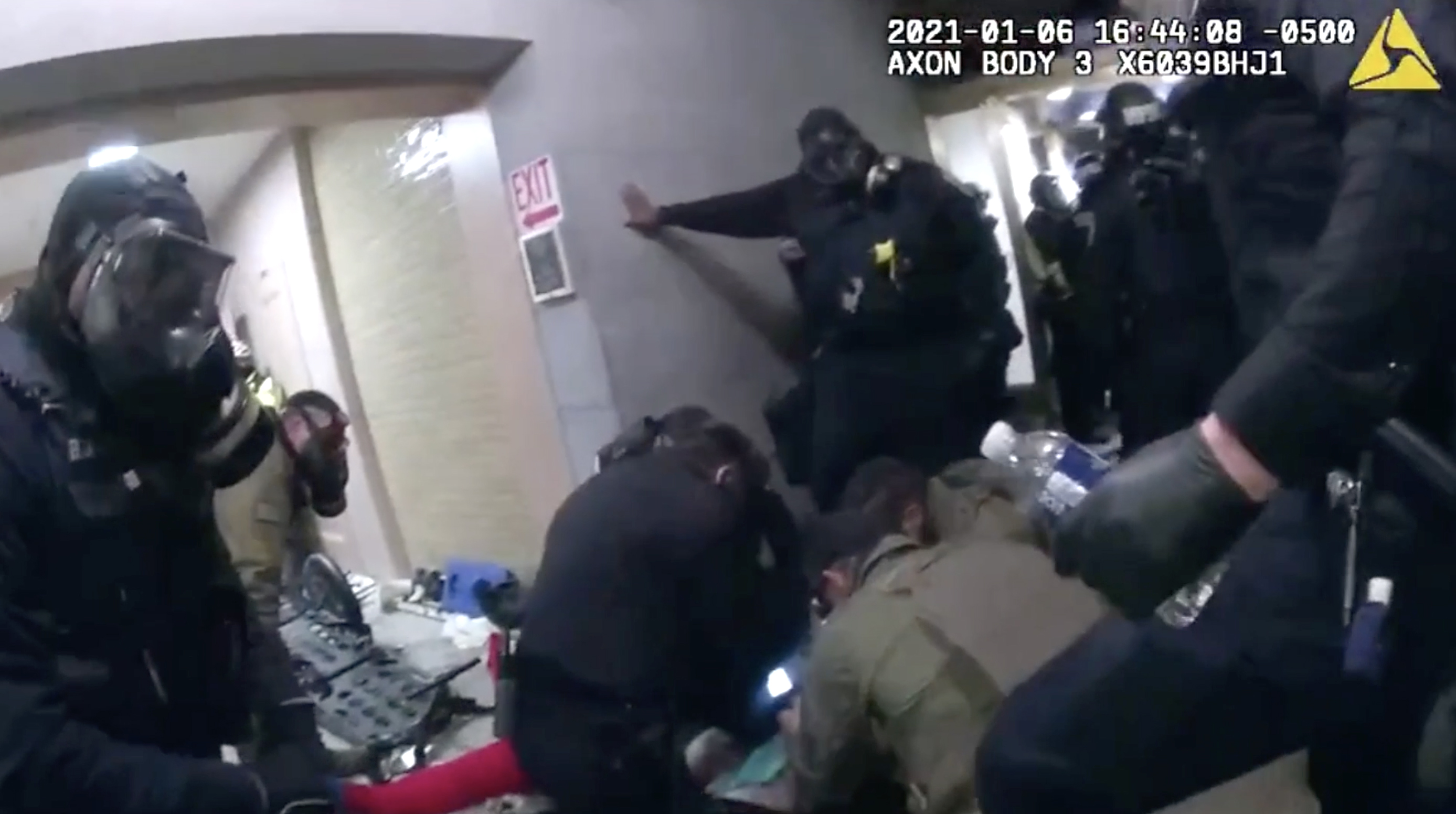
First responders perform CPR on Rosanne Boyland just inside the lower West Terrace tunnel entrance at the U.S. Capitol on Jan. 6, 2021. (Metropolitan Police Department Bodycam/Screenshot via The Epoch Times)
A SWAT team member in a green tactical uniform began CPR. The D.C. Fire and EMS Department was summoned. Within a few minutes, a team of six to eight first responders was working to resuscitate Boyland. She was hooked to an automated external defibrillator.
Morris watched the resuscitation efforts. At 4:38 p.m., her bodycam captures a female voice—likely Morris—asking, “Is he dead?”
Boyland was loaded onto a makeshift gurney and wheeled to the east wing of the Capitol to meet a medical transport unit from D.C. Fire and EMS.
“When we got into the Capitol, they had her on some sort of dolly or pull cart, and they were pulling her down the hallway towards us,” Capt. Ellen Kurland, an EMS supervisor, said in a Jan. 6 documentary produced by DC Fire and EMS. “We worked her for 30 minutes, and she had been down 20 minutes before we were even able to get to her.”
Boyland was put on an IV and given epinephrine every four minutes to stimulate her heart. The rescue squad requested approval to depart for The George Washington University Hospital at 5:10 p.m. “Authorization was not granted,” read a summary of records obtained by the Boyland family.
The records don’t indicate why the ambulance wasn’t allowed to leave the Capitol for a half-hour after requesting approval. A message from The Epoch Times left at the D.C. Metro Fire and EMS Department hasn’t been returned.
The ambulance finally left the Capitol at 5:40 p.m. for the one-mile trip to the hospital. Due to traffic and road closures, the ambulance didn’t arrive at the emergency room until 6 p.m. Boyland was pronounced dead at 6:09 p.m.
“We are not 100 percent [certain of] when she actually passed, but agree it was in that time frame [4:21 to 4:26 p.m.] and probably before Lila Morris got hold of that stick,” Bret Boyland, Rosanne’s father, told The Epoch Times. “No matter whether Rosanne was alive or not, we were shocked and appalled at the officer’s attack.”
‘Objectively Reasonable’
Troubled by the contradictions in the Boyland case, Gary McBride of Decatur, Texas, filed an excessive-force complaint against Morris with the Metropolitan Police Department in September 2021.
“I don’t condone what happened at the Capitol, and I don’t condone the beating of anyone who is defenseless either,” McBride wrote to the D.C. Metro Internal Affairs Bureau on Sept. 14. “It doesn’t matter if you are a protester, preacher, or politician; you should be held accountable for your actions.”
Two months later, in November 2021, Capt. David K. Augustine wrote to McBride and said, “The use of force within this investigation was determined to be objectively reasonable.”
Cause of Death Disputed
The D.C. Office of the Chief Medical Examiner performed an autopsy on Boyland on Jan. 7, 2021. The cause of death was ruled amphetamine intoxication. Boyland’s family questioned that conclusion.
Boyland had a prescription for Adderall, a medication used to treat attention deficit hyperactivity disorder (ADHD). There was no visual evidence or witness statements to indicate any signs the drug impaired her on Jan. 6.
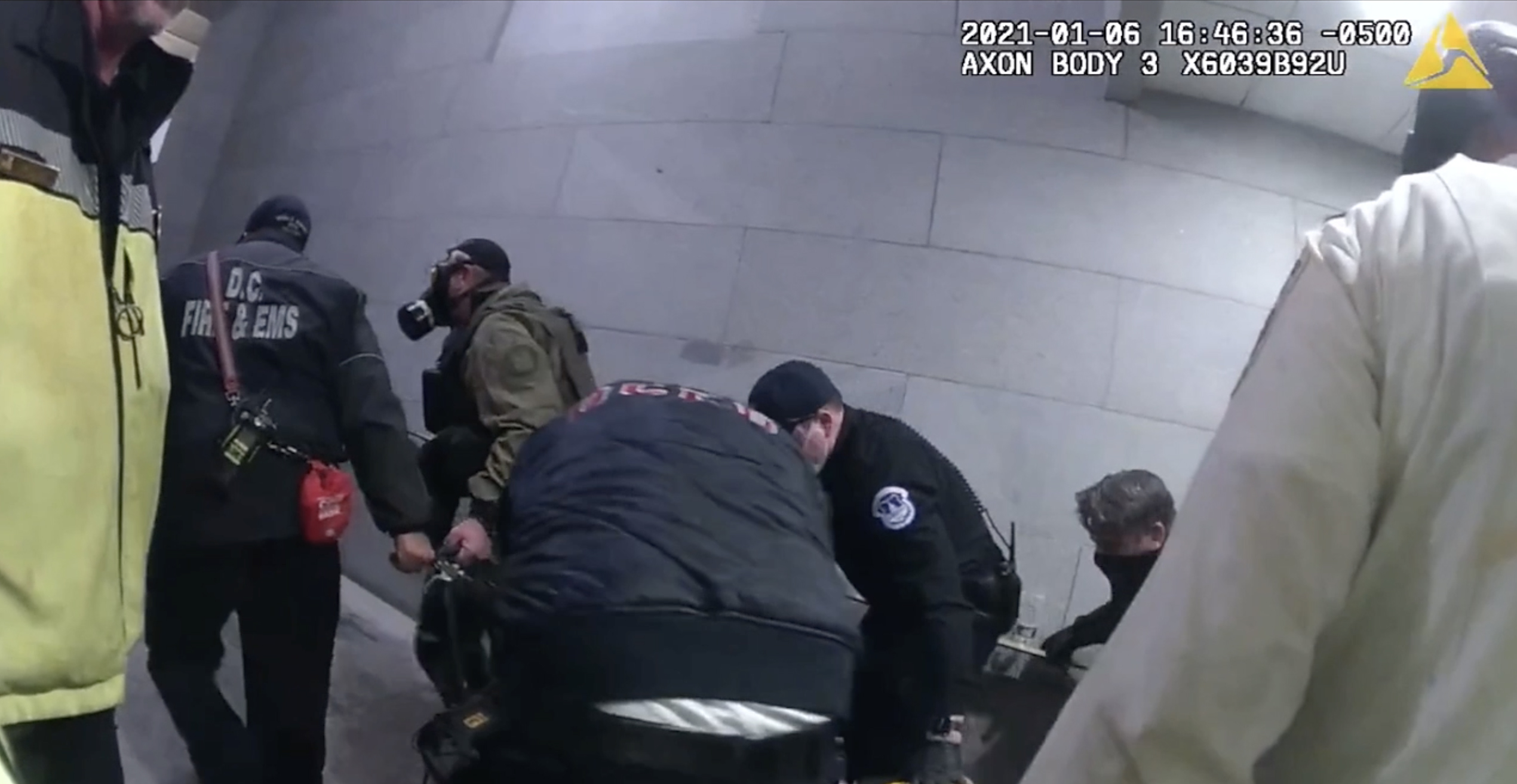
First responders pull Rosanne Boyland on a makeshift gurney to meet a transport unit from DC Fire and EMS at the U.S. Capitol on Jan. 6, 2021. (Metropolitan Police Department Bodycam/Screenshot via The Epoch Times)
The Boyland family hired Park Dietz & Associates to review the autopsy findings. The Park Dietz forensic pathologist agreed that the manner of death was an accident but concluded Boyland’s death was caused by manual asphyxia. Boyland was cremated, so a new autopsy was not possible.
“Compressional asphyxia refers to a situation in which pressure exerted on the chest or back of an individual impedes normal breathing and often leaves no diagnostic physical findings,” read a summary of the Park Dietz report provided to The Epoch Times by the Boyland family.
Amphetamine toxicity “was not the proximate cause of Ms. Boyland’s death, although it cannot be ruled in or out as a contributory factor,” the pathologist wrote. “The circumstances surrounding Ms. Boyland’s death are not consistent with a drug overdose as the proximate cause and cannot be ignored.”
The original autopsy didn’t note any evidence of injury, except for a four-inch bruise on her right forearm. However, bodycam footage of Boyland being dragged from the tunnel entrance at 4:31 p.m. shows what appears to be a wound on her forehead. Another bodycam view seems to show a long red mark starting on the lower section of her left rib cage.
Winchell told an Atlanta television station in 2021 that Boyland developed a nosebleed after the officer struck her in the face with the walking stick.
“I want you to hear me: She was already blue, and the Capitol police—I kid you not—had been hitting everyone with batons and stuff, understandably,” Winchell said.
“But I’m talking, she is laid out, maybe dead at this point, but they hit her at least two times in the body. And then they hit her once in the face, once right here in her nose, and some blood started coming out of her nose.”
According to the autopsy, Boyland suffered left and right anterior rib fractures, but those were likely caused by CPR compressions, the Park Dietz report said. The report noted no evidence that a beating or traumatic injury contributed to her death.
“This does not mean that she was not beaten by a police officer, only that she was already deceased at that time,” the Boyland family said in a statement.
The report said it’s unclear what role chemical irritants sprayed by police and protesters might have had on Boyland’s death. Videos show mace dripping off the clothing of protesters near the police line.
“Please stop pepper spraying,” an unknown man near Boyland pleaded at 4:26 p.m. “Her lungs are full of it.”
Police used an unknown gas on protesters in the tunnel at 4:20 p.m. According to security video, a loud explosion was heard seconds beforehand, causing many protesters in the tunnel to drop to the ground.
Chemical agents such as pyrotechnic oleoresin capsicum, delivered via an exploding munition, work primarily on the lungs. Witnesses in the tunnel described feeling like the oxygen was sucked from the air, making it impossible to breathe. The response was panic.
Kephart said crowd-control munitions were a mistake in such a tight and crowded space.
“If you’re using gas munitions to cause the air to be saturated with a gas displacing the oxygen, and causes them to panic and pass out, thereby clogging the ability for them to disperse because they’re passed out, you have created and worsened the problem,” Kephart said.
“This is an absolute symptom of a lack of proper training. This offends common sense.”
Police can allow fear to overcome their training in high-stress situations, but so can crowds like the one in the West Terrace tunnel.
“The same thing is true with the crowds: If fear [strikes], they do the wrong thing,” he said. “They either drop-down, or they try to flee. And in attempting to do either of those two options, they worsen the circumstance in crowd compaction.”
Birthday Filled With Sadness
April 26 was a sad day at the Georgia home of Bret and Cheryl Boyland. Their late daughter Rosanne would have turned 36. Instead of enjoying a birthday celebration, the Boyland family had to confront the grief that has been ever-present since the night of Jan. 6, 2021.
Rosanne’s parents struggle with many lingering questions about her death. Among them is the exact time their daughter died. Bret Boyland said that based on the review of Rosanne’s autopsy and other factors, he believes she died between 4:21 p.m. and 4:25 p.m.
A review of video and audio from police bodycams identified a series of female coughs between 4:25:34 and 4:26:04. Boyland said the coughs were too short for him to tell if they came from his daughter.
Bodycam and security video of Boyland’s time in the Capitol before being taken to the hospital provided some comfort to her family.
“We were glad to get details of life-saving efforts after she was dragged into the Capitol,” Bret Boyland said. “She just got that attention too late.”
Read more at: TheEpochTimes.com
Submit a correction >>
Tagged Under:
big government, capitol, chaos, conspiracy, crime, DC police, felony assault, Jan. 6, Lila Morris, police state, Police Violence, protest, real investigations, rioting, Rosanne Boyland, traitors, truth, violence
This article may contain statements that reflect the opinion of the author
RECENT NEWS & ARTICLES
COPYRIGHT © 2017 DOMESTIC TERRORISM



